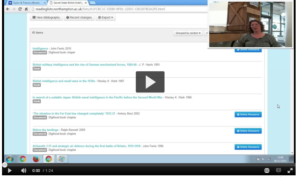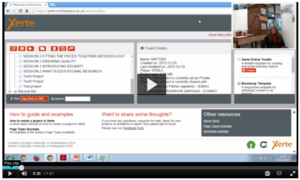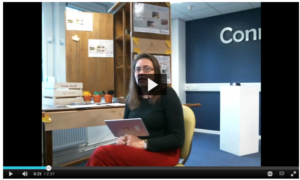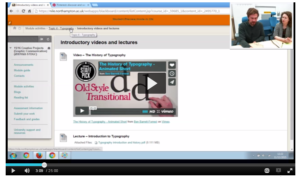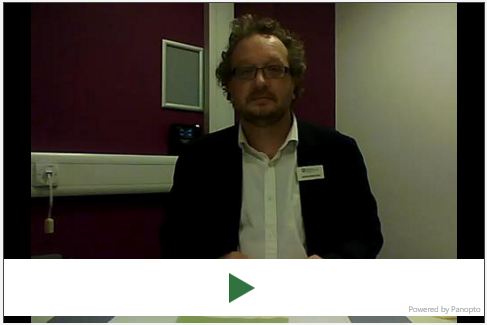George Dimmock talks about the ways in which Academic Librarians can support University of Northampton staff.
In this video Ali talks about experiences with online peer observation as part of a teaching qualification for University of Northampton staff.
In this video James talks through the ways that he has changed his use of NILE to make learning more interactive and to ensure students are better prepared for class.
In this video Sylvie talks about how she has been changing the delivery of academic skills to develop the the level of integration between generic academic skills and subject specific skills. In addition, she explains the process of integrating blended approaches into CfAP’s (Centre for Achievement and Performance) delivery.
In this video Tanya and Claire talk about their work developing e-tivities for their education students in order to provide a pre-sessional activity and inter-sessional activity and a post-sessional activity for students. They share the strengths of the approach including flexibility and accessibility for the students, sharing of staff expertise and the things they have learnt about best practice.
In this video, recorded as part of the S.H.E.D – Sharing Higher Education Designs, James Underwood (Principal Lecturer in Teachers’ CPD) demonstrates an essay planning technique useful at different levels and in different contexts.
This technique is discussed, as mentioned at the end of the video, in the following paper:
Recent Posts
- Blackboard Upgrade – December 2025
- Preparing for your Physiotherapy Apprenticeship Programme (PREP-PAP) by Fiona Barrett and Anna Smith
- Blackboard Upgrade – November 2025
- Fix Your Content Day 2025
- Blackboard Upgrade – October 2025
- Blackboard Upgrade – September 2025
- The potential student benefits of staying engaged with learning and teaching material
- LearnTech Symposium 2025
- Blackboard Upgrade – August 2025
- H5P (HTML5 package) content types meets the needs of Jim Atkinson, Staff Development Trainer
Tags
ABL Practitioner Stories Academic Skills Accessibility Active Blended Learning (ABL) ADE AI Artificial Intelligence Assessment Design Assessment Tools Blackboard Blackboard Learn Blackboard Upgrade Blended Learning Blogs CAIeRO Collaborate Collaboration Distance Learning Feedback FHES Flipped Learning iNorthampton iPad Kaltura Learner Experience MALT Mobile Newsletter NILE NILE Ultra Outside the box Panopto Presentations Quality Reflection SHED Submitting and Grading Electronically (SaGE) Turnitin Ultra Ultra Upgrade Update Updates Video Waterside XerteArchives
Site Admin

